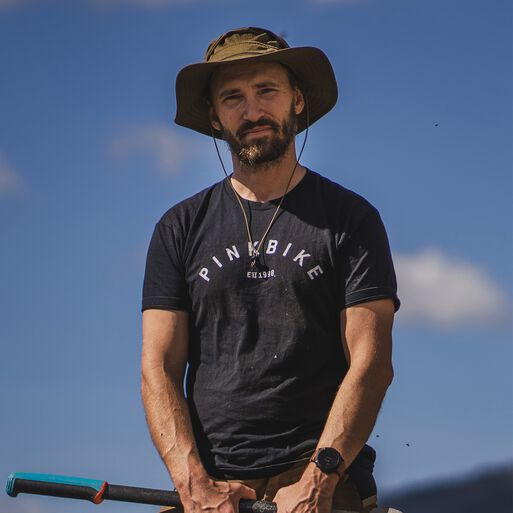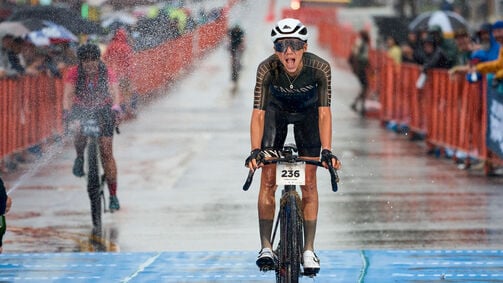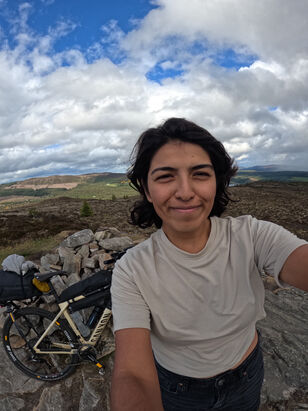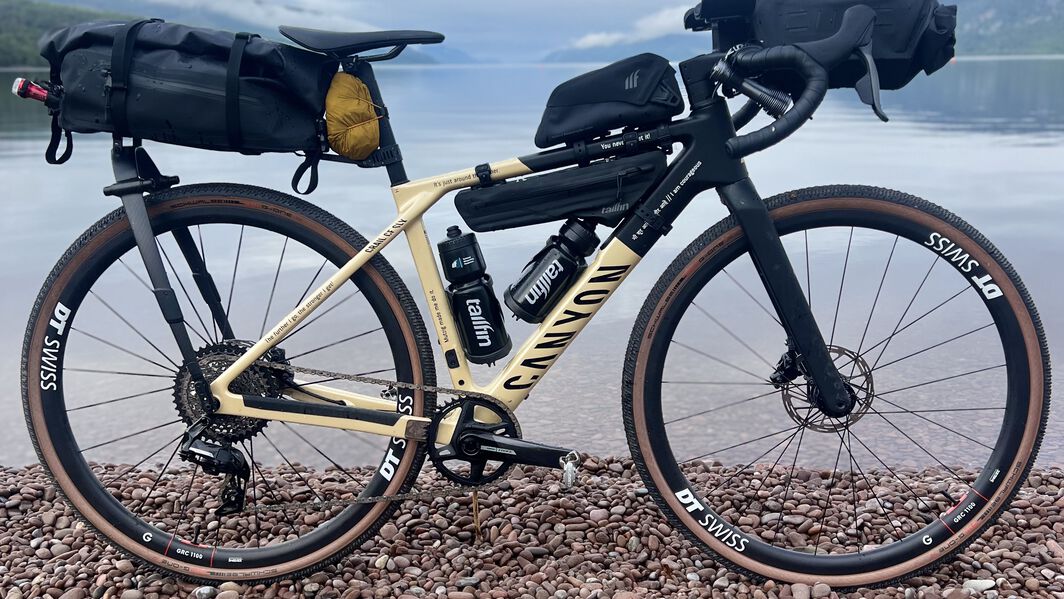Gravel racing explained: What it is and what bike you’ll need
Tempted to try your hand at gravel racing? This short guide will help you understand the race formats, what to expect and how to prepare for your first gravel race.


Contents
Gravel riding was born from racing. It was at the Dirty Kanza race in 2006, in rural Kansas, USA, where a collection of ideas about riding drop-bar bikes off-road coalesced into a recognisable discipline. Those first races were more than 200 miles long, sending riders off into the wild backcountry on their network of unpaved, dirt roads. The format connected with riders and by 2022, more than 4,000 people were lining up at the start each year.
Today, gravel riding has become the fastest-growing discipline in all of cycling. For many, racing is far from what they enjoy doing, they would rather focus on getting lost in nature and exploring. Curiosity is a powerful thing though, and in a sport that has racing running through its DNA, it is only normal that at some point you might want to find out what all the fuss is about.
This short guide will help you understand the major formats of gravel racing, walk you through the essential preparation and offer some tips on what you will need to think about to go gravel racing.
Why go gravel racing?
For some people, the allure of gravel racing is simple. They love the challenge, the competition, and the training. If this sounds like you, then there is probably no need to convince you that it is something worth trying. However, if you are sitting there thinking, “I’m not competitive, I’m not sure I’m fit or fast enough,” or anything along those lines, then there are still some good reasons to go gravel racing.
One of the most popular reasons for going gravel racing is the people. You will tend to find that when you are away from the pointy end of the race there are people in the same boat as you. For many people, the goal is just to reach the finish line and if they can have a nice chat as they go around, then all the better. Nothing builds camaraderie faster than facing challenges together.
Gravel races are also a great way to explore new areas or regions. You don’t have to worry about finding good riding as that is taken care of by the organisers. You can show up, pin on a number and sample the best an area has to offer.
I love that gravel racing is so much more than an individual sport. You get to meet like-minded people with the same sort of adventurous spirit and a bit of a competitive nature. But the gravel scene is not pretentious, it’s very chillVedangi Kulkarni

What formats does gravel racing use
Depending on who you ask, there are three or four main categories of gravel race. Most will offer different categories and courses to suit riders of different abilities, so you don’t need to worry about going bar-to-bar with the pros.
Gravel racer, Vedangi Kulkarni recommends that, “you ask yourself what do I want out of this? What is the measure of your success? If this is your first ever race, then perhaps sticking to your race strategy and making it to the finish line could be your measure of success? Or maybe even finishing within a certain period of time. Either way, your intention should be based around you and your performance rather than how you compare to others around you.”
Simple loop
The simplest format possible - you head out on a course, probably in the morning, and finish later that day. It can be argued that there are two versions of this format - short and long - because racing longer distances completely change the nature of the race. Once you get past a certain point, it becomes as much a mental as a physical challenge and self-sufficiency becomes more and more important. For your first race, we would simply recommend finding a one over a distance you feel confident riding and start from there.
Stage-based format
This concept is loosely borrowed from enduro mountain biking, in that the race is held on a series of special stages. In a simple loop race, you are timed from the start line to the finish line, while here you are only timed on the stages. While it may sound intimidating to use a mountain bike format, these races is actually designed to be more accessible for beginners. Because the timing is only on the stages, that means you can take on the rest of the course at whatever speed feels good for you (although you should check if they have cut-off times for the stages), which encourages people to be more sociable as they pedal round.
Multi-day
These are the biggest and most adventurous gravel races, taking on routes too big for a single day. You will find a lot of variety in this area as everybody has their own take on what a gravel adventure should be. Some races will have a central camp that you rejoin each night, while others may expect you to be self-sufficient for several days.
What bike do I need to go gravel racing?
A gravel bike is, naturally, the ideal bike for gravel racing. While we classify our Grail gravel bike as our race-oriented machine, if you are there for the experience rather than the results, our Grizl adventure bike would be a perfect partner too.
This said, if you are curious about trying a gravel race then you can bring any bike that can run suitable tyres. For example, our Endurace road bike has clearance for 35mm tyres. While the pros are now choosing 50mm tyres for gravel racing, 35mm is plenty to give it a go. One bike that would not struggle for tyre clearance is our Exceed cross-country mountain bike, with a suspension fork at the front and space for mountain bike-size tyres it will be really comfortable and some pros are experimenting with this sort of setup for high-end racing.
Preparing my bike to go gravel racing
It is always worth giving your bike a thorough check before you head out to race. Any minor issue will inevitably become a major one at the worst possible point on the course and you may have a long walk home to reflect on your mistake.
You should check that your saddle is at the right height and that your controls are all comfortable. Make sure that it is all set so you have comfortable access to them from your main riding position. A small issue that you can ignore on your rides at home may become a nightmare deep into a race.
Bike tyre pressures are the biggest setup topic, they are a constant balance between comfort and puncture resistance. Vedangi advises that, “You really don’t wanna max out on this, trust me. You are in it for the long haul and need to be comfortable to be able to push hard. Check your tyre pressures before you line up at the start.”
Finally, there is storage. You are going to need to carry additional gear compared to a regular ride, so how are you going to carry it all? This is where a purpose-built gravel bike like the Grizl comes into its own. Equipped with multiple hard storage points on the frame, you can fine-tune your setup with a wide range of bags and brackets.

Vedangi’s Top Tip
“Everything you need on the go should be within reach. With any kind of off-road cycling, it’s worth making sure that everything that you’ll need on the go- nutrition, hydration, extra layer, or your multi tool- is stored in a way that guarantees quick access. If you were to get a puncture, you’d have to stop to fix it anyway. So, that stuff can be stored in the frame bag. But you don’t want to have to stop just because you shoved your food at the bottom of your hydration pack where it may be hard to access.”
What gear do I need to go gravel racing?
Self-sufficiency is a huge part of gravel racing. Many races will have aid stations around the course, but most of these will offer you food and water, they won’t have bicycle repair kits or additional clothing. This means you need to prepare for your race thoroughly.
Bicycle repairs
Even with a perfectly prepared bike, you may encounter mechanical issues out on the course and will need to be ready to deal with them yourself. At the top of the list for all gravel racers are punctures. These are nearly inevitable, especially if you are trying to reduce your tyre pressures for more comfort. On a leisurely ride, changing an inner tube can be a bit of a hassle, during a race it can be a nightmare. This is one of the main reasons why pro gravel racers run tubeless setups. These can be repaired with tyre plugs - small, sticky inserts that you shove into the puncture to seal it. There is a bit of an art to doing this, so we would recommend getting some practice at home because deep into a race is not the time to be learning new skills.
Alongside your regular toolkit, we would recommend bringing a chain tool and a couple of quick links to repair your chain. If you are using electronic components, you should definitely charge them the night before and, if you have them, it is always worth carrying spare batteries with you.
First aid
As you head further away from civilisation, you are going to need to look after your health more. You don’t need to carry a full medical bag, but plasters, bandages, a survival blanket and something you can use as a sling or tourniquet are essentials. Race organisers should always offer medical assistance, but you need to be able to keep yourself safe and comfortable until they can reach you.
If you have any specific requirements, like important medication or allergies, you should definitely make sure you have everything you need with you. Carrying water purifying tablets and electrolytes is always recommended too, because dehydration can be dangerous. Sun cream may not strictly be first aid, but sunburn is not a good feeling after a long, hard day.
Cycling clothing
Prepare for the worst, hope for the best is a good strategy for clothing. If you are planning to be out in nature all day, you need to be ready for whatever it may throw at you. Sure, it may be mid-summer, but heading out for a long day without a rain jacket is never a great plan.
Vedangi’s main rule for clothing is simple: “It needs to be comfortable. Make sure that your first time wearing it isn’t on your race day. You should be able to move it in easily. You need to be able to breathe in it without any trouble - sweaty or not.”

Ready for your first gravel race?
Hopefully, this should give you all the information you need to think about trying your first gravel race. If you’re still unsure, we think Vedangi explains the appeal of gravel racing far better than we can, “I love that gravel racing is so much more than an individual sport. You get to meet like-minded people with the same sort of adventurous spirit and a bit of a competitive nature. But the gravel scene is not pretentious, it’s very chill. Besides, you get to ride your bike fast in some really off-beat locations with incredible landscapes. What’s not to love?”
Did this article help?
Thank you for your feedback
-
 About the author
About the authorMatt Wragg
Get to know Matt Wragg, the freelance photographer, writer, and self-proclaimed bicycle-breaker based in Nice, France. Despite unsuccessful attempts at XC, trials, 4X, and DH racing, Matt's passion for mountain biking never waned. After a stint in communications consulting, he decided to pursue his love for cycling and moved to New Zealand. Since then, he has traveled the world, chasing trails and building a successful career as a cycling photographer and writer. In 2021, he was diagnosed as autistic and has been coming to terms with it. His bike cellar is a true testament to his love for cycling, housing bikes that range from freeride to cargo.




